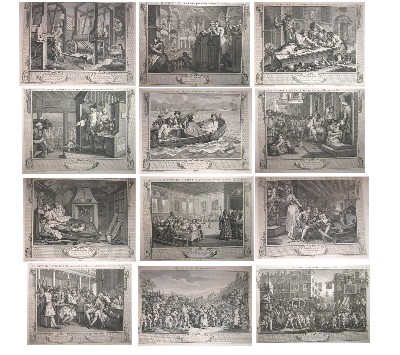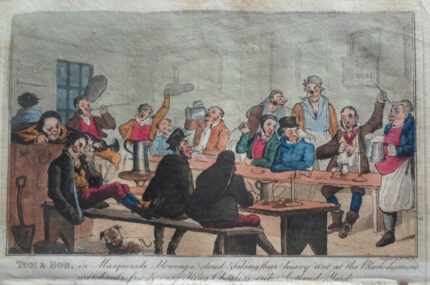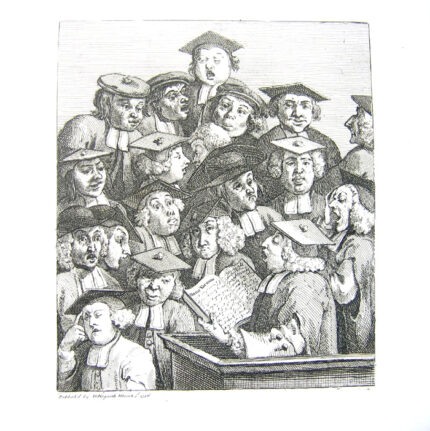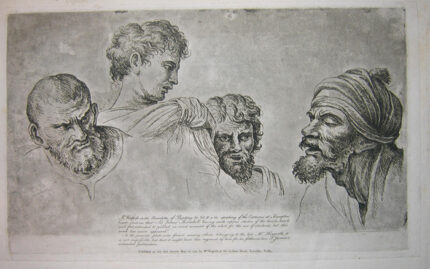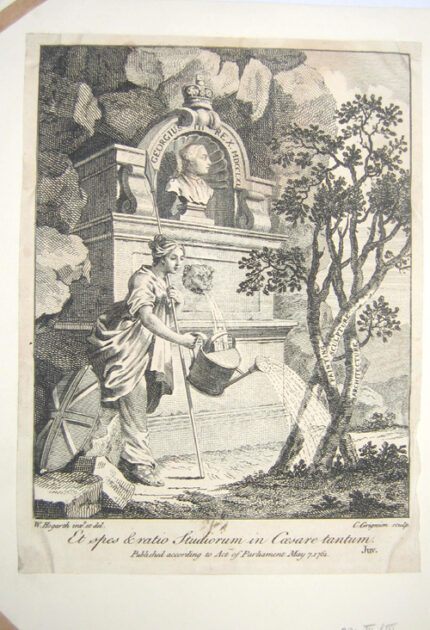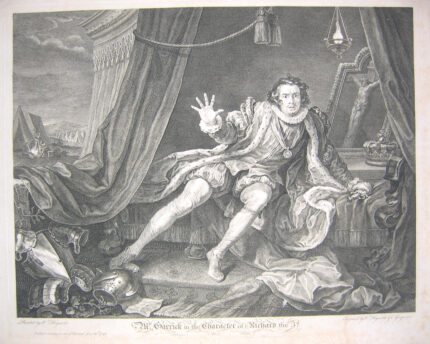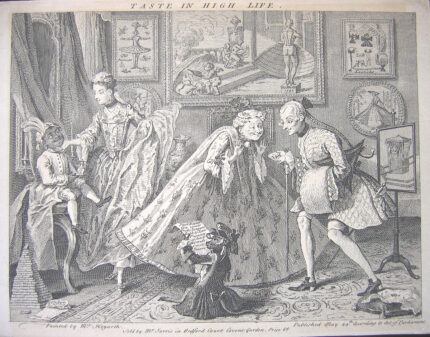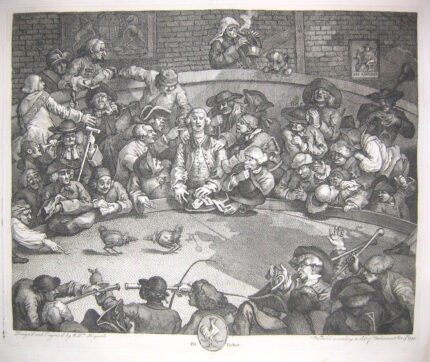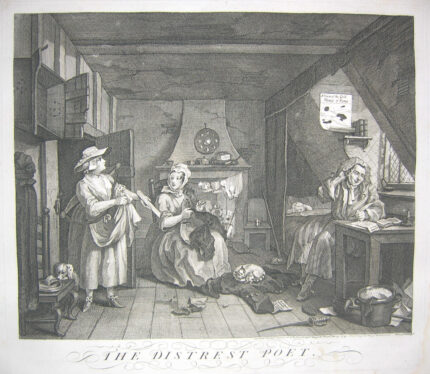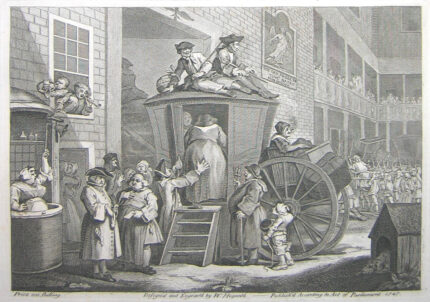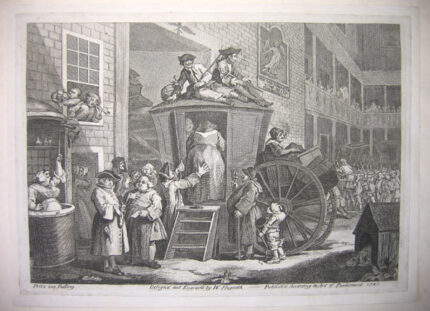Industry and Idleness
£1,200.00
William Hogarth
Industry and Idleness
London, J. Boydell 1809
Copper engravings
Average size 270x350mm
Set of 12 plates £1200
William Hogarth – Industry and Idleness
William Hogarth – Industry and Idleness
Hogarth’s famous moral tale (first published 1747) of the contrasting careers of the idle and the industrious apprentices.
Idle turns to robbery and murder, is betrayed by a prostitute and eventually ends up being hung at Tyburn, while Goodchild works hard, marries his master’s daughter and becomes Lord Mayor of London.
These prints were often given to apprentices by their masters for Christmas presents. The copperplates of this set were recently purchased by the British Museum.
- The Fellow ‘Prentices at their Looms
Paulson 168, state II/II.
- The Industrious ‘Prentice Performing the Duty of a Christian
Paulson 169, state II/II
- The Idle ‘Prentice at Play in the Churchyard
Paulson 170, state II/II
- The Industrious ‘Prentice a Favorite and Entrusted by his Master
Paulson 171, state II/II
- The Idle ‘Prentice Turned Away and sent to Sea
Paulson 172, state II/II
- The Industrious ‘Prentice out of his Time and Married to his Master’s Daughter
Paulson 173, state V/V
- The Idle ‘Prentice Returned from Sea and in a Garret with a Common Prostitute
Paulson 174, state II/II
- The Industrious ‘Prentice Grown Rich and Sherrif of London
Paulson 175, state II/II
- The Idle ‘Prentice Betrayed by his Whore and taken in a Night Cellar with his Accomplice
Paulson 176, state IV/IV
- The Industrious ‘Prentice Alderman of London, the Idle one brought before him & Impeach’d by his Accomplices
Paulson 177, state II/II
- The Idle ‘Prentice Executed at Tyburn
Paulson 178, state III/III
- The Industrious ‘Prentice Lord Mayor of London
Paulson 178, state III/III
William Hogarth
William Hogarth, (born November 10, 1697, London, England—died October 26, 1764, London). The first great English-born artist to attract admiration abroad, best known for his MORAL and satirical engravings and paintings—e.g., A Rake’s Progress (eight scenes,1733).
His attempts to build a reputation as a history painter and portraitist, however, met with financial disappointment. His aesthetic theories had more influence in Romantic literature than in painting.

